Junji Ito’s Horror Manga Irresistible to Fans at Home and Abroad; Horror Mangaka Carries Surprisingly Positive Image
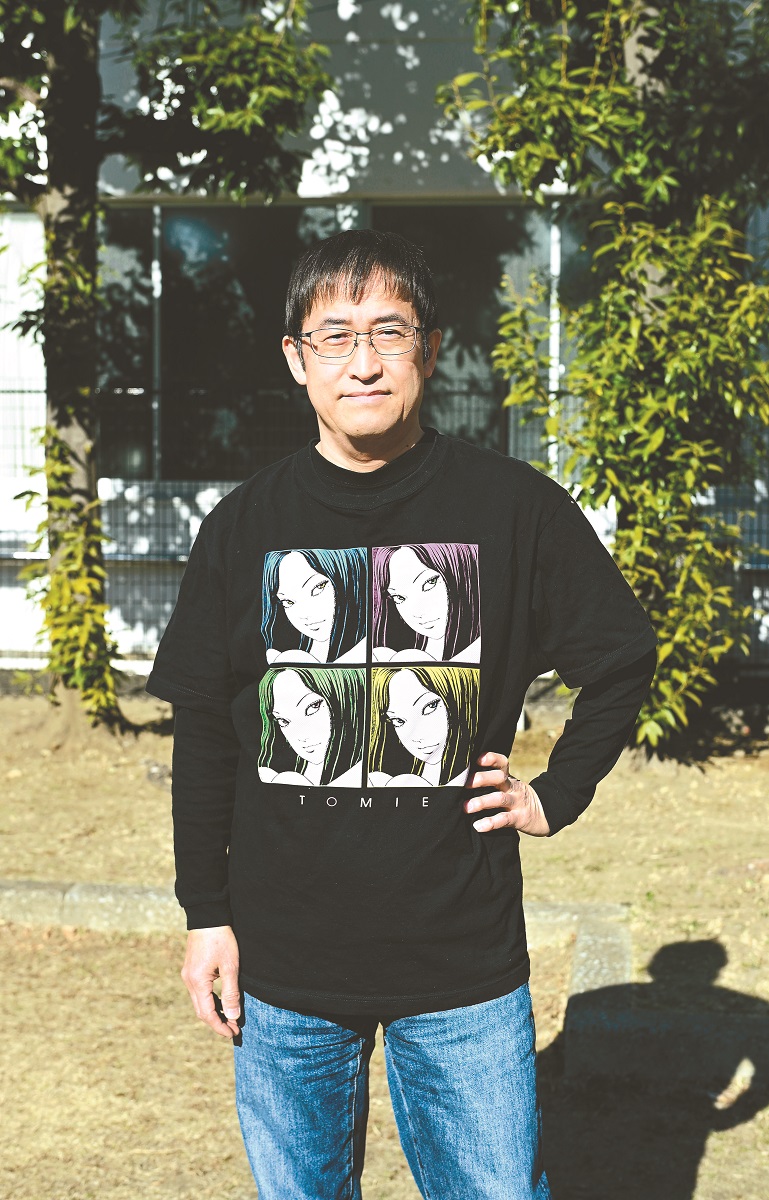
The Yomiuri Shimbun
12:15 JST, April 11, 2025
Junji Ito’s popularity has been growing worldwide. The 61-year-old manga artist is known for his horror manga, such as “Tomie,” in which a glamorous girl takes on grotesque forms, and “Uzumaki,” which depicts the people of a town sinking into an obsession with spirals. He is a four-time winner in the Eisner Awards, a U.S. comic prize dubbed the Academy Awards of comics.
In recent years, he has also collaborated with the apparel industry, and a growing number of his fans don clothes featuring characters who sprang from his imagination. On the day I interviewed him, I brought my own T-shirt printed with illustrations of “Tomie,” his debut work, one of his most famous manga. He kindly accepted my outrageous request that he wear the T-shirt.
“It’s a bit embarrassing to wear a shirt with my own character on it,” he said. “Tomie is a pretty girl, so she probably has good chemistry with the apparel [industry].”
In “Tomie,” the beautiful girl Tomie, who flirts and toys with men, is ultimately killed by these same men and transforms into terrifying monsters. The manga was serialized in magazines after the first story’s publication. Tomie’s age and hairstyle changed from chapter to chapter. The manga has also been widely read overseas, such as in South Korea and Taiwan.
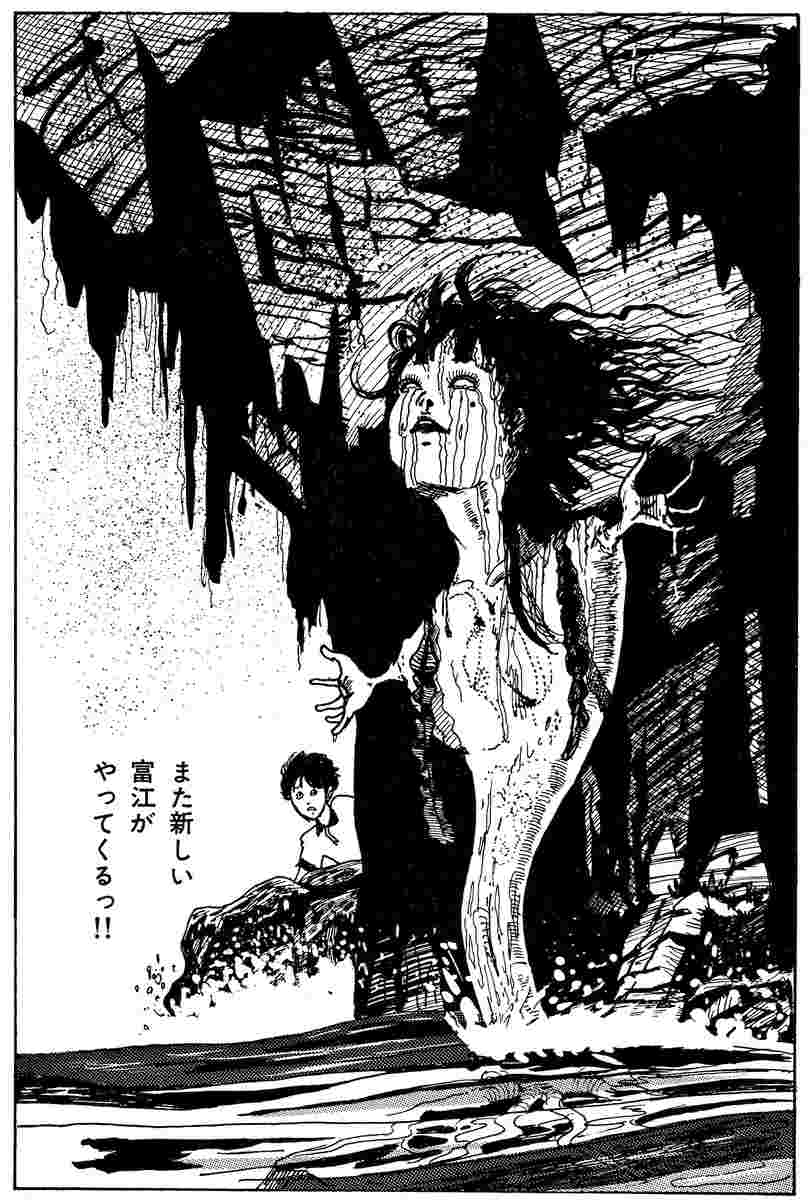
Tomie starts transforming into a new body after being murdered in a scene from “Tomie.”
“‘Tomie’ is not the kind of manga you read and throw away,” Ito said. “I tried to make it a work that can be appreciated for a long time. That mystical sensation of being unable to accept one’s own death — I wanted to turn that sensation into a manga. I also wanted to take on the challenge of drawing a pretty girl as beautifully as possible.”
In recent years, South Korean pop idols have imitated Tomie’s makeup, which went viral on social media. In September last year, Ito appeared at a fan meeting in Seoul and had a fun time with his fans, playing games and enjoying other activities. Apparently, some South Korean fans affectionately call him “dad” because he has a calm and friendly personality.
“In Japan, an autograph session is usually the main event, but fan events abroad feel more like TV shows. At first, I was nervous and struggled to speak. Then those around me gave encouragement, saying, ‘Raise your voice!’ so I did my best, thinking ‘What happens here stays here.’ I wanted my fans to enjoy themselves because they came all the way to the event,” he said.
Ito has an unusual CV. He was a dental technician before becoming a manga artist in his early 20s.
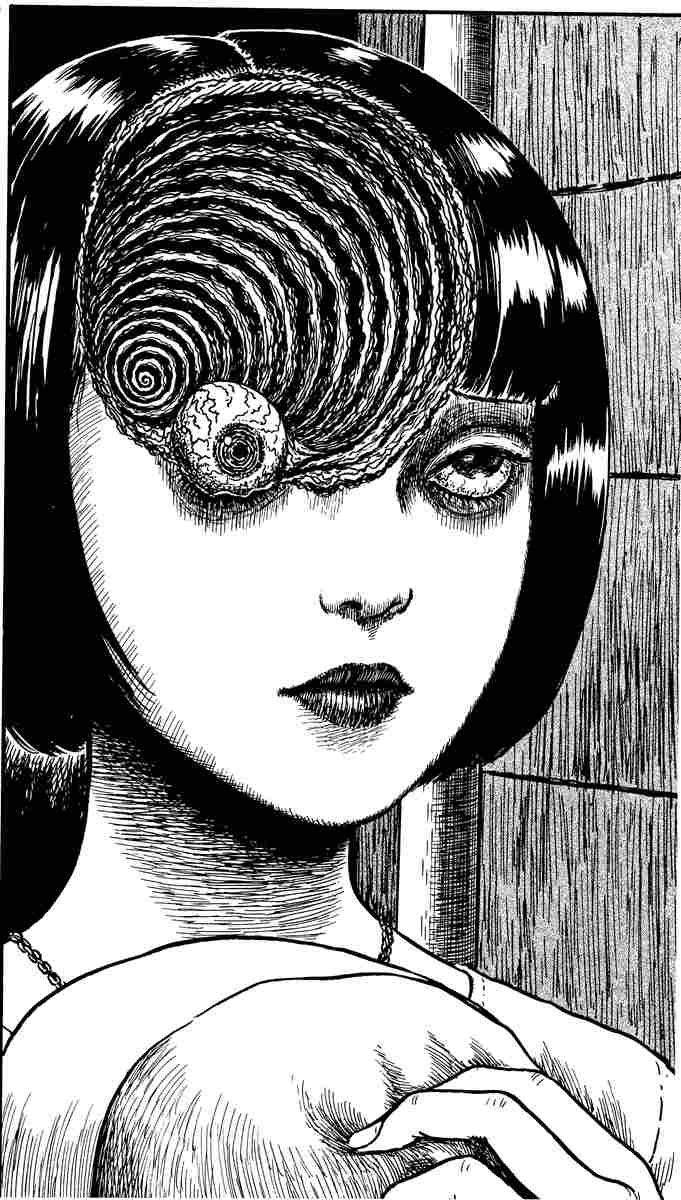
A scene from “Uzumaki,” in which people’s bodies are twisted into spirals.
“It felt rewarding to make something for my work, but it became tough on my body,” he said. “I used to think I’d die at around 40, so I thought of giving my all to manga, which I love,” he said.
Another popular work by Ito is the “Soichi” series.
“I was like Soichi as a child,” Ito revealed. “At school, I was a docile and introverted kid but not at home. Like Soichi, I was only tough on my own turf.
“At first, [Soichi] was a side character, but he became the lead at the advice of my editor.”
At the root of his horror manga art is a sensation of being afraid of himself, he said.
“You feel strange when you hear a recording of your voice or see yourself on a video, right?” he said. “I think questions like ‘Who am I?’ and ‘What is a human being?’ are at the core of that feeling.”
Many of Ito’s works are themed around the human body, such as “Namekuji Shojo” (“Slug Girl”), which is about a girl whose tongue becomes a slug, and “Umeku Haisuikan” (“Groaning Drain Pipes”), in which a person’s body becomes twisted and sucked into a drain pipe.
“It probably all started from my fear of the darkness in human minds, which led to a fear of the human bodies that contain such minds,” he said.
Junji Ito
The horror manga artist was born in Nakatsugawa, Gifu Prefecture, in 1963. He won a prize at the first Kazuo Umezu manga awards for his premier work “Tomie.” “Tomie” has been adapted to film multiple times. In 2023, he received an honorary prize at the Angouleme International Comics Festival, one of the largest comic festivals in Europe.
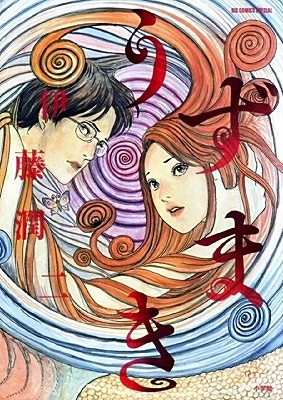
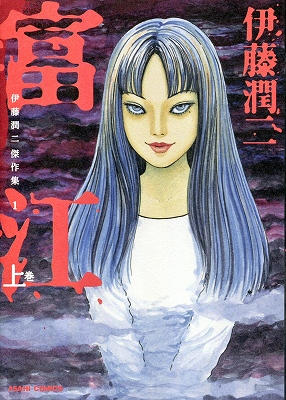
"Culture" POPULAR ARTICLE
-
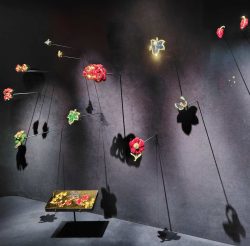
Van Cleef & Arpels Dazzles with Art Deco Artisanry at Tokyo Exhibit
-

Disney’s ‘Twisted-Wonderland’ Animated Series Puts Villains in Spotlight: New Show Features School Inspired by Classic Disney Films
-

Japan Plans to Distribute Manga Overseas Via New Platform
-

Ayumi Hamasaki’s Shanghai Concert Canceled Day Before Schedule as Part of Beijing Backlash
-

‘The World Masterpiece Theater Series’ Celebrates 50 Years; Animator Looks Back on Creating Anime Classics
JN ACCESS RANKING
-

Tokyo Economic Security Forum to Hold Inaugural Meeting Amid Tense Global Environment
-

Keidanren Chairman Yoshinobu Tsutsui Visits Kashiwazaki-Kariwa Nuclear Power Plant; Inspects New Emergency Safety System
-

Imports of Rare Earths from China Facing Delays, May Be Caused by Deterioration of Japan-China Relations
-

University of Tokyo Professor Discusses Japanese Economic Security in Interview Ahead of Forum
-

Japan Pulls out of Vietnam Nuclear Project, Complicating Hanoi’s Power Plans



◎上海の日本アニメイベント_20251129YGTGS000921_C-250x168.jpg)






















